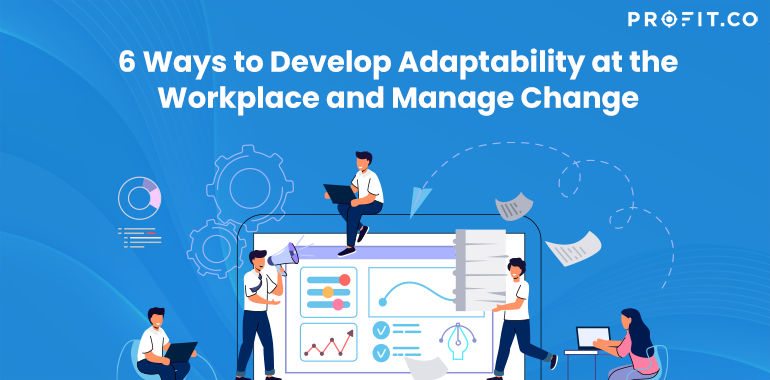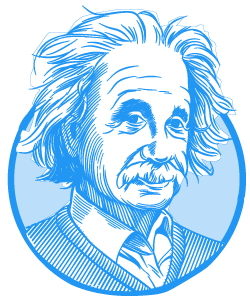6 Strategies to Develop Adaptability at the Workplace
Adaptability has become a critical competency for individual and organizational success. As the pace of change accelerates, the ability to navigate uncertainty, embrace new challenges, adapt flexibility in management, and thrive in fluid environments is increasingly crucial. Let’s explore six key strategies that can help individuals and organizations develop and enhance adaptability within the workplace.
“The Measure of Intelligence is The Ability to Change”
1. Cultivate a Growth Mindset
It’s about perceiving challenges as opportunities, transforming the ‘I can’t’ into ‘I can’t yet.’ This mindset fosters resilience, pushing you to transcend limits and embrace growth as a continuous journey.
- Embrace the belief that your abilities are not permanent but can be developed through effort and learning.
- View challenges not as obstacles but as opportunities to learn and grow.
- Be open to new experiences and perspectives, even if they contradict your beliefs.
Navigate change successfully with our proven models. Lead the transformation now!
Growth Mindset Vs. Fixed Mindset
A growth and a fixed mindset represent two distinct approaches to learning and facing challenges. Individuals with a fixed mindset perceive intelligence and abilities as static, leading them to shy away from challenges and view effort as a sign of weakness. They tend to set performance goals and avoid experiences that might expose their limitations. Conversely, those with a growth mindset believe intelligence and skills can be developed through consistent effort and experience. They embrace challenges, see effort as essential for learning, set mastery goals for continuous improvement, and are more open to feedback and trying new strategies. This mindset leads to more resilience in the face of setbacks and a proactive approach to personal development.
2. Manage Your Emotions
The art of adaptability is as much about internal resilience as it is about external agility. Managing your emotions is key to navigating workplace uncertainties with grace and positivity. It’s about balancing rationality and empathy, ensuring decisions are made with clarity and compassion.
- Recognize and acknowledge your emotional response to change, whether fear, anxiety, or excitement.
- Work on healthy coping mechanisms for dealing with difficult emotions, such as mindfulness or exercise.
- Seek support from colleagues, mentors, or mental health professionals if needed.
Mindfulness and Emotional Intelligence
Mindfulness and emotional intelligence are interlinked concepts crucial for personal and professional development. Mindfulness, the practice of being fully present and engaged at the moment, enhances self-awareness, a key component of emotional intelligence. This awareness allows individuals to better understand and manage their emotions, leading to improved decision-making and relationships. Emotional intelligence, encompassing self-awareness, self-regulation, motivation, empathy, and social skills, benefits greatly from mindfulness practices.

3. Practice Active Learning
Change is the only constant, and active learning is your solution. It involves a proactive quest for knowledge, skills, and experiences. This continuous learning curve keeps you ahead of the curve, ready to pivot and adapt to whatever the professional tide brings
- Continuously seek out new knowledge and skills relevant to your field and industry.
- Participate in training and development programs, attend workshops, and network with professionals in your field.
- Read industry publications, listen to podcasts, and stay up-to-date on the latest trends.
7 active learning techniques that can be practiced in the workplace
- Simulate real-world challenges to enhance problem-solving and decision-making skills.
- Share knowledge and skills among colleagues, fostering a collaborative learning environment.
- Encourage creative thinking and idea generation in groups.
- Analyze real or hypothetical business scenarios to apply theoretical knowledge practically.
- Participate in hands-on workshops for skill development.
- Keep a work diary to reflect on daily experiences and lessons learned.
- Regularly give and receive constructive feedback for continuous improvement.
4. Foster Strong Relationships
Building robust relationships in the workplace is akin to laying a foundation for successful adaptability. These relationships serve as a support network, offering diverse perspectives and fostering a collaborative environment that eases the challenges of change.
- Build trust and rapport with your colleagues, supervisors, and clients.
- Collaborate effectively in teams, share knowledge, and support each other during challenging times.
- Ask for feedback regularly and be open to constructive criticism.
Integration with existing systems
7 Popular activities to build workplace relationships
- Team Building Exercises: Engage in activities that require collaboration and problem-solving.
- Regular Check-Ins: Schedule informal meetings to catch up and discuss non-work topics.
- Mentoring Programs: Pair up employees for mentoring to share knowledge and experiences.
- Social Outings: Organize team lunches or outings to bond outside of work.
- Volunteer Opportunities: Participate in community service projects as a team.
- Professional Development Workshops: Attend workshops together to learn new skills.
- Celebration of Milestones: Acknowledge the personal and professional milestones of team members.
5. Embrace Structured Change Management Models
Incorporating structured change management models like Kotter’s 8-Step Process or the ADKAR model provides a framework to understand, plan, and implement change effectively. It’s about navigating change with a roadmap, ensuring every step is strategic and purposeful.
- Communicate the change clearly and transparently to all stakeholders.
- Involve employees in the change process and provide opportunities for feedback.
- Celebrate successes and milestones along the way to maintain momentum.
The Essence of Change Management Models
Change management models provide structured approaches to organizational transformation, offering a roadmap for leaders to navigate complex changes effectively. Whether it’s a major shift like digital transformation or a smaller-scale project like streamlining invoicing processes, these models are pivotal for guiding strategies and actions. They serve as a blueprint for planning, executing, and sustaining change, ensuring leaders can align their initiatives with the desired outcomes for a smoother transition.
6. Develop a Personal Game Plan
Tailor a personal game plan that aligns with your unique strengths and career trajectory. This plan includes specific strategies to deal withchange management, ensuring adaptability aligns with your personal growth and professional aspirations.
- Identify your strengths and weaknesses when you are dealing with change.
- Set realistic goals for personal growth and development.
- Seek out opportunities to practice adapting to new situations.
- Reflect on your past experiences and identify areas for improvement.
10 reflective questions to consider regarding how you handle change and adaptability in the workplace
- How do I usually react to unexpected changes at work?
- What are my initial feelings toward new challenges or tasks?
- How effectively do I manage stress or anxiety brought about by change?
- In what ways have I adapted to past changes in my work environment?
- How do I approach learning new skills or technologies required for my job?
- Can I recall when I successfully adapted to a significant change at work? What made it successful?
- How do I support my colleagues during times of change?
- What strategies do I use to remain focused and productive during transitions?
- How open am I to different perspectives and new ways of doing things?
- What can I do to improve my adaptability and embrace change more positively?
In conclusion, adaptability in the workplace centers on cultivating a growth mindset, effectively managing emotions, committing to active learning, and nurturing robust interpersonal relationships. It involves embracing structured models for change and tailoring individual approaches to adapt to new circumstances. Additionally, fostering an adaptable organization is crucial, ensuring that the entire workforce is resilient and responsive to change. By integrating these strategies, both individuals and organizations can navigate and prosper in the constantly shifting professional environment.

